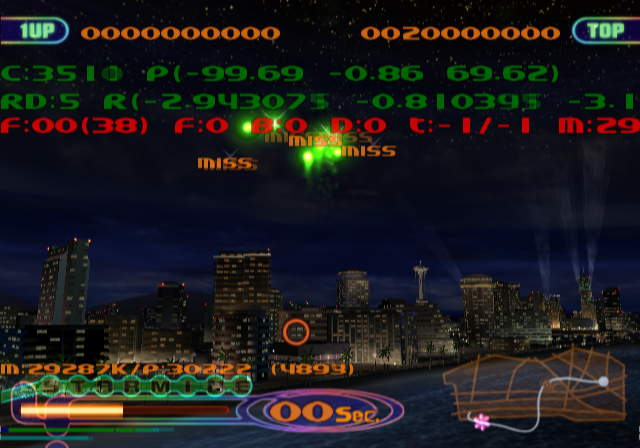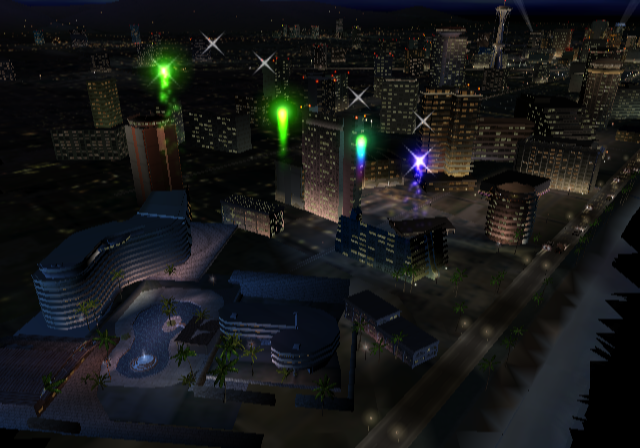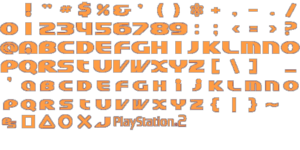Fantavision
| Fantavision |
|---|
|
Developer: Sony Computer Entertainment
|
| This article is a work in progress. ...Well, all the articles here are, in a way. But this one moreso, and the article may contain incomplete information and editor's notes. |
Fantavision is one of the launch titles for the PlayStation 2. It's a fast-paced, color-matching puzzle game and a fireworks simulator in one.
| To do: There's more to this game than meets the eye, apparently.
|
Contents
Sub-Pages
| Prototype Info |
| Configuration and Disc Mapping Files |
Debug Features
Applying the below code will enable debug features or enable unused demo modes.
USA codes: DISP_PROFILER 2048A3EC 00000001 USE_NO_LIFE_DOWN 2048A520 00000001 USE_DESINER 2048A3DC 00000001 NO_USE_SEVEN_COLOR_BALL 2048A594 00000001 MODE_DEVELOPMENT 2048A5E0 00000001 USE_TEXTURE_VEIW 2048A460 00000001 USE_PARALEL_LIGHT_CHECK 2048A518 00000001 MODE_E3_VER 2048A5B0 00000001 MODE_EXPERIENCE 2048A464 00000001
- DISP_PROFILER: Enables the same debug information that MODE_DEVELOPMENT does.
- USE_NO_LIFE_DOWN: Life bar does not decrease.
- USE_DESINER: Enables a free camera mode when L2 + L1 is pressed, or disables HUD elements when L2 is pressed. Only works if MODE_DEVELOPMENT is enabled as well.
- NO_USE_SEVEN_COLOR_BALL: Unknown.
- MODE_DEVELOPMENT: Enables a debug mode when pressing R3. Pressing L2 + L1 enables a free camera mode when USE_DESINER is also on.
- USE_TEXTURE_VEIW: Press Triangle to cycle through loaded textures.
- USE_PARALEL_LIGHT_CHECK: Displays extra debug info if MODE_DEVELOPMENT is on.
- MODE_E3_VER: Likely puts the game into E3 mode with restrictions.
- MODE_EXPERIENCE: Puts the game into a demo mode.
Hidden Developer Credits
Present in the executable for all versions of the game are hidden developer credits crediting the game's programmers.
*** Fantavision for PlayStation2 *** Copyright(C)2000 Sony Computer Entertiment. Programmed by Toshio Fukui, Akihiro Taguchi, Toshitake Tsuchikura, Nobukazu Ohta.
Unused Logo
Located in \DATA\COMMON.PKG, inside the main font texture (used for menu commands and title cards for stages), there is a hidden PlayStation 2 logo.
Unused Cinematics
In the Japanese version, the pre-rendered scenes with live actors are not used except the opening (that is played once you go back to the title screen from the main menu). However, they are saved in \DATA\MOVIE\, and images of the actors appear in the Staff Credits.
Regional Differences
| To do: There's... a lot, just on menus alone. Start digging through the menus, then go on with the actual levels to see if anything's changed between the revisions.
|
Opening FMV
The opening FMV in the Japanese version uses the game's main theme, while the US version's opening has a more upbeat rendition of the Japanese theme and a different logo. The European version, however, uses that version's title screen music on the Japanese version's FMV.
| Japan | US | Europe |
|---|---|---|
Title Screen
Not only do the logos for the Japanese and American version of the game differ quite massively, but so does the background music! The European version uses the Japanese version's logo but, again, with a massively different soundtrack.
| Japan | US | Europe |
|---|---|---|
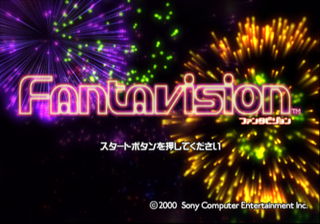
|
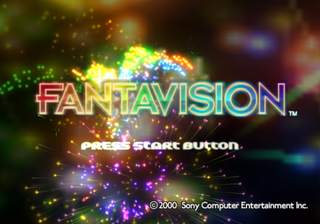
|
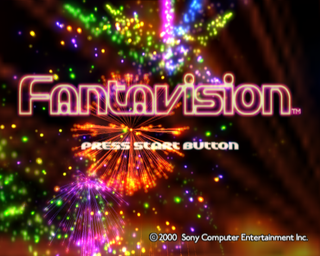
|
Main Menu
There's quite the changes applied to Fantavision's main menus:
- The overall theme of the main menu is given a bit of a makeover in the European version from the Japanese and American versions.
- The Tutorial menu is renamed throughout all of the releases, for one reason or another. Japan has it as Explain, America gets it as Tutorial and Europe sees it as Rules.
- Option gets updated to display as Options in the European release.
- What was originally Memory Card(PS2) in the Japanese release was renamed to Save/Load Settings in the US and European releases, probably to better describe what saving and loading data from the memory card does.
- Extra gets moved from right below Game Start in the Japanese release to right above the Exit option in the American and European releases. To add to that, the European version renames this option to Bonus.
- The Staff credits option was relegated to the options menu in the US and European releases.
- The Japanese and European releases display the word Fantavision on the bottom left corner of the menu, with the Japanese version displaying it in, well, Japanese and the European version displaying it in the game's logotype. The US release does not show anything at that corner.
| Japan | US | Europe |
|---|---|---|

|
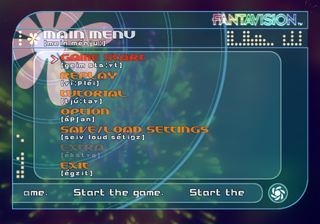
|
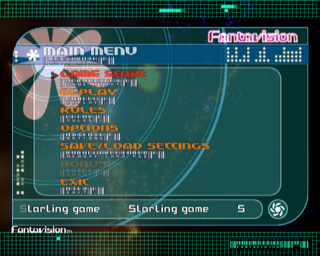
|
Game Start Menu
The Game Start option... starts the game, or at least that's what it does in the Japanese version. The US and European releases add a menu to accommodate the addition of the 2-player mode. Even this menu has some weird changes of its own:
- What is called the Normal game mode in the US version is called Easy in the European version. Strangely enough, the scrolling text that describes the highlighted option also calls this mode Beginner in the US version.
- Gameset is given a space in the European version, where it is called Game Set.
| US | Europe |
|---|---|

|

|
Tutorial Menu
The tutorial menu also gets updated between the releases! See a running theme? The name change of this menu between versions is explained in the Main Menu section.
- Basic Rule is corrected from the Japanese release to Basic Rules in the US and European releases.
- What is called Expansion Rule in the Japanese release is called Advanced Rules in the US and European releases.
- The US and European releases add a section for the 2 Player Versus mode.
| Japan | US | Europe |
|---|---|---|

|
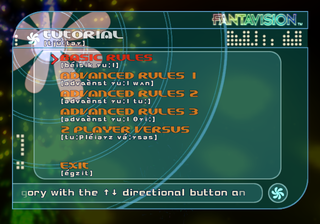
|

|
Tutorial Demonstration
Not much actually changes between the three here, but still, there's some minor things to demonstrate here.
- Each version's different logos are all accounted for here, which also prominently showcases the trademark symbol on the US logo that isn't visible on the Japanese and European logos.
- Likewise, any other theme changes used in the main menu are reflected in the Tutorial demonstrations.
| Japan | US | Europe |
|---|---|---|

|
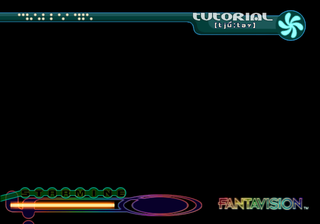
|

|
2P Versus Rules
Yes, even this is specifically rewritten from the US release to the European release. And, because this game can't go five seconds without renaming something, the Prev. indicator is renamed from the US release to Back in the European release.
| US | Europe |
|---|---|
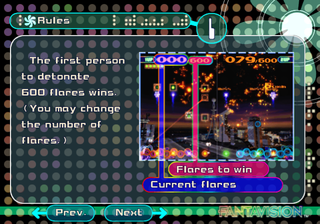
|
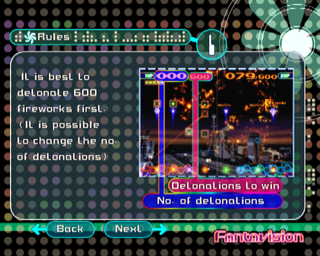
|
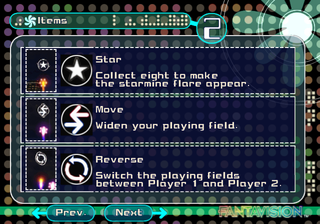
|
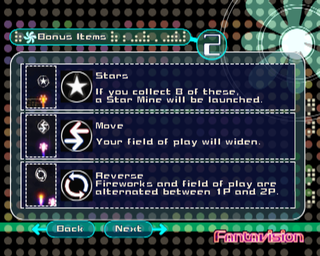
|
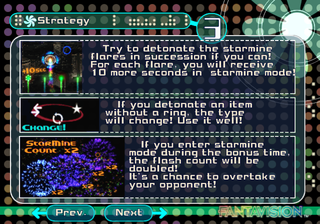
|

|
Audio Changes
- As stated above, the soundtrack is different between versions. The Japanese version, composed by Soichi Terada, leans more into an elevator music style. The North American version, composed by the late Ashif Hakik (RIP) and his Digital Bitphonic Orchestra, adopts a new-age vibe. Finally, the European version, composed by Jim Croft of Vodoo Music, is more techno oriented.
- The announcer voice varies between versions. The Japanese and European versions have a female voice, with the European version having a slightly different voice. The female voice acting also applies to the European language translations. The North American version uses a male voice instead. Strangely, in this version, the female voice can still be heard in the Ultra Play Rules videos that are unchanged from the Japanese version, even retaining Japanese text.
- Pages missing developer references
- Games developed by Sony Computer Entertainment
- Pages missing publisher references
- Games published by Sony Computer Entertainment
- PlayStation 2 games
- Pages missing date references
- Games released in 2000
- Games released in March
- Games released on March 9
- Games released in October
- Games released on October 25
- Games released in November
- Games released on November 24
- Games with hidden developer credits
- Games with unused graphics
- Games with unused cinematics
- Games with debugging functions
- Games with regional differences
- Works In Progress
- Works In Progress for Over 1 Year
- To do
Cleanup
Cleanup > Pages missing date references
Cleanup > Pages missing developer references
Cleanup > Pages missing publisher references
Cleanup > To do
Cleanup > Works In Progress
Cleanup > Works In Progress > Works In Progress for Over 1 Year
Games > Games by content > Games with debugging functions
Games > Games by content > Games with hidden developer credits
Games > Games by content > Games with regional differences
Games > Games by content > Games with unused cinematics
Games > Games by content > Games with unused graphics
Games > Games by developer > Games developed by Sony Corporation > Games developed by Sony Interactive Entertainment > Games developed by Sony Computer Entertainment
Games > Games by platform > PlayStation 2 games
Games > Games by publisher > Games published by Sony > Games published by Sony Interactive Entertainment > Games published by Sony Computer Entertainment
Games > Games by release date > Games released in 2000
Games > Games by release date > Games released in March
Games > Games by release date > Games released in March > Games released on March 9
Games > Games by release date > Games released in November
Games > Games by release date > Games released in November > Games released on November 24
Games > Games by release date > Games released in October
Games > Games by release date > Games released in October > Games released on October 25

